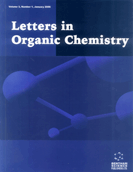Abstract
Peptides are important as drugs and biologically active molecules. The synthesis of peptides has gathered considerable attention in recent years due to their various attractive properties. Conventional peptide synthesis is tedious and requires hazardous reagents and solvents. Microwave- assisted solid-phase peptide synthesis has several advantages compared with conventional batch synthesis. Herein, we have discussed various microwave-assisted solid-phase peptide bond synthesis methods developed over the last five years. Peptides are categorized into four groups - small, medium, large, and cyclic based on their length and structural characteristics to make it easier to understand. This review article also discusses the scope and limitations of microwave-assisted solid-phase peptide synthesis.
Keywords: Microwave, solid phase, peptide, protecting groups, amino acids, large peptides.
[http://dx.doi.org/10.1021/ja00897a025]
[http://dx.doi.org/10.1016/S0076-6879(97)89040-4] [PMID: 9353714]
[http://dx.doi.org/10.1002/bip.20925] [PMID: 18213693]
[http://dx.doi.org/10.1021/ol901893p]
[http://dx.doi.org/10.1002/anie.201914935] [PMID: 32091645]
[http://dx.doi.org/10.1039/D2GC02319A]
[http://dx.doi.org/10.1007/s10989-016-9534-8]
[http://dx.doi.org/10.2174/1389201043489620] [PMID: 14965208]
[http://dx.doi.org/10.1007/978-1-62703-544-6_4] [PMID: 23943478]
[http://dx.doi.org/10.1002/psc.2836] [PMID: 26785684]
[http://dx.doi.org/10.1016/j.tetlet.2018.11.054]
[http://dx.doi.org/10.1126/science.3961484] [PMID: 3961484]
[http://dx.doi.org/10.1021/ja00722a043]
[http://dx.doi.org/10.1111/j.1399-3011.1990.tb00939.x] [PMID: 2191922]
[http://dx.doi.org/10.1016/j.ejmech.2019.02.024] [PMID: 30807888]
[http://dx.doi.org/10.1021/cr100048w] [PMID: 21866984]
[http://dx.doi.org/10.1016/j.jhazmat.2005.05.044] [PMID: 16084016]
[http://dx.doi.org/10.1002/chem.200900614] [PMID: 19575348]
[http://dx.doi.org/10.1002/chem.200900615] [PMID: 19621394]
[http://dx.doi.org/10.1002/psc.2517] [PMID: 23712932]
[http://dx.doi.org/10.1016/j.cbpa.2004.03.002] [PMID: 15183318]
[http://dx.doi.org/10.1039/C1CS15214A]
[http://dx.doi.org/10.1039/C4SC02943G]
[http://dx.doi.org/10.1039/C4OB02348J]
[http://dx.doi.org/10.1016/j.tetlet.2014.09.056]
[http://dx.doi.org/10.1021/ol3010003] [PMID: 22578091]
[http://dx.doi.org/10.1021/acs.joc.2c00828] [PMID: 35969667]
[http://dx.doi.org/10.1002/cphc.201900211] [PMID: 30950574]
[http://dx.doi.org/10.1021/ja992079h]
[http://dx.doi.org/10.1002/chem.201303290] [PMID: 24273074]
[http://dx.doi.org/10.1016/0003-2697(82)90612-1] [PMID: 6280514]
[http://dx.doi.org/10.1016/j.jmr.2014.12.017] [PMID: 25797004]
[http://dx.doi.org/10.1021/ja072349t] [PMID: 17530852]
[http://dx.doi.org/10.1073/pnas.0912009106] [PMID: 19995976]
[http://dx.doi.org/10.1016/j.abb.2017.06.010] [PMID: 28623034]
[http://dx.doi.org/10.1021/acs.jpcb.6b09021] [PMID: 28099013]
[http://dx.doi.org/10.1021/acs.jpcb.5b05230] [PMID: 26230514]
[http://dx.doi.org/10.1002/anie.201103315] [PMID: 21898726]
[http://dx.doi.org/10.1002/anie.201102539] [PMID: 21919142]
[http://dx.doi.org/10.1002/cphc.201100630] [PMID: 22028312]
[http://dx.doi.org/10.1002/1439-7641(20021115)3:11<927:AID-CPHC927>3.0.CO;2-Q] [PMID: 12503132]
[http://dx.doi.org/10.1016/0009-2614(84)80148-7]
[http://dx.doi.org/10.1002/(SICI)1521-3773(19981102)37:20<2833:AID-ANIE2833>3.0.CO;2-7] [PMID: 29711097]
[http://dx.doi.org/10.1002/1521-3773(20021018)41:20<3907:AID-ANIE3907>3.0.CO;2-T] [PMID: 12386888]
[http://dx.doi.org/10.1006/jmre.2002.2596] [PMID: 12323146]
[http://dx.doi.org/10.1017/S003358350700460X] [PMID: 17565764]
[http://dx.doi.org/10.1002/cbic.200300705] [PMID: 14613105]
[http://dx.doi.org/10.1002/1521-3773(20010601)40:11<2004:AID-ANIE2004>3.0.CO;2-5] [PMID: 11433435]
[http://dx.doi.org/10.1016/j.tetlet.2011.03.077]
[http://dx.doi.org/10.1016/j.jmr.2016.12.001] [PMID: 27992783]
[http://dx.doi.org/10.1039/B9PY00216B]
[http://dx.doi.org/10.3390/ijms21124464] [PMID: 32586051]
[http://dx.doi.org/10.1016/j.addr.2004.10.009] [PMID: 15722163]
[http://dx.doi.org/10.1002/pro.2647] [PMID: 25808204]
[http://dx.doi.org/10.1007/978-3-642-78110-0_6]
[http://dx.doi.org/10.1016/S0040-4039(00)99954-4]
[http://dx.doi.org/10.1021/cr800323s] [PMID: 19364121]
[http://dx.doi.org/10.1039/C9GC03784E]
[http://dx.doi.org/10.1021/acs.oprd.7b00389]
[http://dx.doi.org/10.1039/j39710000046]
[http://dx.doi.org/10.1002/hlca.19610440730]
[http://dx.doi.org/10.1016/S0040-4020(98)00248-8]
[http://dx.doi.org/10.1021/jo981567p]
[http://dx.doi.org/10.21608/ejchem.2019.7119.1611]
[http://dx.doi.org/10.1016/j.coph.2006.04.004] [PMID: 16860608]
[http://dx.doi.org/10.1016/j.drudis.2012.03.002] [PMID: 22465171]
[http://dx.doi.org/10.3390/molecules23020295] [PMID: 29385037]
[http://dx.doi.org/10.3390/ijms17020185] [PMID: 26840305]
[http://dx.doi.org/10.1093/humrep/det064] [PMID: 23585561]
[http://dx.doi.org/10.1016/j.freeradbiomed.2014.11.013] [PMID: 25433365]
[http://dx.doi.org/10.1021/acs.joc.6b00300] [PMID: 27137354]
[http://dx.doi.org/10.1016/S0041-0101(00)00160-4] [PMID: 10936622]
[http://dx.doi.org/10.1039/b312953p]
[http://dx.doi.org/10.1038/342291a0] [PMID: 2812028]
[http://dx.doi.org/10.2174/138161211798999384] [PMID: 22204424]
[http://dx.doi.org/10.1039/b924677k] [PMID: 21072382]
[http://dx.doi.org/10.3390/biom4020419] [PMID: 24970223]
[http://dx.doi.org/10.1021/la000246h]
[http://dx.doi.org/10.1021/acs.joc.0c02359] [PMID: 33491451]
[http://dx.doi.org/10.1021/jo500493c] [PMID: 24807867]
[http://dx.doi.org/10.1016/j.bmc.2007.05.006] [PMID: 17507231]
[http://dx.doi.org/10.1039/C7OB00536A]
[http://dx.doi.org/10.1002/cmdc.200600250] [PMID: 17206734]
[http://dx.doi.org/10.1021/jo100870q] [PMID: 20704430]
[http://dx.doi.org/10.1039/C3OB41990H]
[http://dx.doi.org/10.1021/jo01340a015]
[http://dx.doi.org/10.1055/s-2008-1032179]
[http://dx.doi.org/10.1016/S0040-4039(00)89654-9]
[http://dx.doi.org/10.1021/jo01350a023]
[http://dx.doi.org/10.1016/j.cclet.2009.11.030]
[http://dx.doi.org/10.1080/00397911.2014.905601]
[http://dx.doi.org/10.1016/j.tet.2012.07.014]
[http://dx.doi.org/10.1021/acs.joc.5b01668] [PMID: 26440300]
[http://dx.doi.org/10.1002/bip.10586] [PMID: 14991678]
[http://dx.doi.org/10.1002/advs.201800234] [PMID: 30027052]
[http://dx.doi.org/10.1002/anie.200501023] [PMID: 16267872]
[http://dx.doi.org/10.1007/128_2014_613] [PMID: 25860252]
[http://dx.doi.org/10.1146/annurev.biochem.67.1.425] [PMID: 9759494]
[http://dx.doi.org/10.1146/annurev-biochem-060310-170328] [PMID: 22524316]
[http://dx.doi.org/10.1038/embor.2008.93] [PMID: 18516089]
[http://dx.doi.org/10.1021/jacs.7b00089] [PMID: 28328208]
[http://dx.doi.org/10.1038/nature07958] [PMID: 19325621]
[http://dx.doi.org/10.1016/j.molcel.2009.01.014] [PMID: 19217402]
[http://dx.doi.org/10.1007/s00018-008-8090-6] [PMID: 18438605]
[http://dx.doi.org/10.1038/nrm2673] [PMID: 19352404]
[http://dx.doi.org/10.1146/annurev.biochem.78.101807.093809] [PMID: 19489725]
[http://dx.doi.org/10.1016/j.cbpa.2004.09.009] [PMID: 15556404]
[http://dx.doi.org/10.1042/BST0370937] [PMID: 19754430]
[http://dx.doi.org/10.1038/nrm3394] [PMID: 22820888]
[http://dx.doi.org/10.1038/nsmb.2547] [PMID: 23563141]
[http://dx.doi.org/10.1016/j.cell.2008.04.012] [PMID: 18485873]
[http://dx.doi.org/10.1016/j.tins.2011.05.004] [PMID: 21704388]
[http://dx.doi.org/10.1016/j.pharmthera.2014.11.002] [PMID: 25444757]
[http://dx.doi.org/10.1016/j.cell.2014.03.037] [PMID: 24813613]
[http://dx.doi.org/10.1039/C6SC02889F]
[http://dx.doi.org/10.1002/anie.201407824] [PMID: 25353391]
[http://dx.doi.org/10.1002/anie.201106430] [PMID: 22131237]
[http://dx.doi.org/10.1039/C5RA20976E]
[http://dx.doi.org/10.1002/anie.201100996] [PMID: 21648030]
[http://dx.doi.org/10.1002/anie.201203843] [PMID: 22968928]
[http://dx.doi.org/10.1038/nprot.2013.152] [PMID: 24232250]
[http://dx.doi.org/10.1002/anie.201310010] [PMID: 24470054]
[http://dx.doi.org/10.1002/anie.201500051] [PMID: 25772600]
[http://dx.doi.org/10.1021/ja500222u] [PMID: 24559202]
[http://dx.doi.org/10.1038/nchem.2517] [PMID: 27325097]
[http://dx.doi.org/10.1021/jacs.6b04031] [PMID: 27268299]
[http://dx.doi.org/10.1002/anie.200704195] [PMID: 18046687]
[http://dx.doi.org/10.1002/anie.201709097] [PMID: 28971554]
[http://dx.doi.org/10.1016/j.celrep.2016.08.024] [PMID: 27653698]
[http://dx.doi.org/10.1016/j.tet.2011.08.046]
[http://dx.doi.org/10.1007/BF00117955]
[http://dx.doi.org/10.1038/s41467-020-14755-6] [PMID: 32080186]
[http://dx.doi.org/10.1002/cbic.202000865] [PMID: 33493390]
[http://dx.doi.org/10.1039/D1CB00252J]
[http://dx.doi.org/10.1371/journal.pone.0139710] [PMID: 26436664]
[http://dx.doi.org/10.1038/s41598-022-26616-x] [PMID: 36627316]
[http://dx.doi.org/10.3109/13506129.2012.700287] [PMID: 22799493]
[http://dx.doi.org/10.1021/ol101981b] [PMID: 20931985]
[http://dx.doi.org/10.1002/psc.2756] [PMID: 25708449]
[http://dx.doi.org/10.1038/nrd2590] [PMID: 18591981]
[http://dx.doi.org/10.1039/C4SC03089C]
[http://dx.doi.org/10.1016/j.drudis.2014.10.003] [PMID: 25450771]
[http://dx.doi.org/10.1007/s10989-014-9421-0]
[http://dx.doi.org/10.1021/acsmedchemlett.9b00149] [PMID: 31312403]
[http://dx.doi.org/10.1021/cr040669e] [PMID: 15755082]
[http://dx.doi.org/10.1021/jm070836d] [PMID: 17983214]
[http://dx.doi.org/10.1021/ja0563455] [PMID: 16492015]
[http://dx.doi.org/10.1021/acs.jmedchem.5b00128] [PMID: 25950816]
[http://dx.doi.org/10.1021/ar8000603] [PMID: 18636716]
[http://dx.doi.org/10.1007/128_052]
[http://dx.doi.org/10.1002/anie.201401058] [PMID: 25287434]
[http://dx.doi.org/10.1021/ja904698q] [PMID: 19886660]
[http://dx.doi.org/10.1002/bip.22669] [PMID: 25968458]
[http://dx.doi.org/10.4155/fmc.12.93] [PMID: 22857532]
[http://dx.doi.org/10.1021/jm1012374] [PMID: 21381769]
[http://dx.doi.org/10.1039/C5OB00880H]
[http://dx.doi.org/10.1038/nchem.1062] [PMID: 21697871]
[http://dx.doi.org/10.1002/psc.491] [PMID: 12952390]
[http://dx.doi.org/10.1039/b001942i]
[http://dx.doi.org/10.2174/138527208786241501]
[http://dx.doi.org/10.1007/s10989-019-09877-5]
[http://dx.doi.org/10.1016/j.tet.2019.03.014]
[http://dx.doi.org/10.1111/j.1399-3011.1997.tb01122.x] [PMID: 9128102]
[http://dx.doi.org/10.1002/bip.1981.360200903] [PMID: 7306667]
[http://dx.doi.org/10.1111/j.1399-3011.1991.tb00767.x] [PMID: 1917307]
[http://dx.doi.org/10.1016/j.jbiotec.2004.03.015] [PMID: 15288942]
[http://dx.doi.org/10.1021/ja00497a032]
[http://dx.doi.org/10.1021/ja00444a060]
[http://dx.doi.org/10.1016/0040-4039(93)85003-F]
[http://dx.doi.org/10.1016/0040-4039(94)88531-1]
[http://dx.doi.org/10.1016/0040-4039(95)02269-4]
[http://dx.doi.org/10.1111/j.1399-3011.1998.tb00660.x] [PMID: 9894841]
[http://dx.doi.org/10.1111/j.1399-3011.2001.00816.x] [PMID: 11298927]
[http://dx.doi.org/10.1021/acs.orglett.6b00296] [PMID: 26914725]
[http://dx.doi.org/10.1007/s10989-012-9316-x]
[http://dx.doi.org/10.1021/co4000979] [PMID: 24016186]
[http://dx.doi.org/10.1023/A:1013057832044]
[http://dx.doi.org/10.1002/(SICI)1521-3765(19991001)5:10<2787:AID-CHEM2787>3.0.CO;2-2]
[http://dx.doi.org/10.1021/ja974116f]
[http://dx.doi.org/10.1002/pep2.24044]
[http://dx.doi.org/10.1002/1521-3773(20000915)39:18<3168:AID-ANIE3168>3.0.CO;2-U] [PMID: 11028061]
[http://dx.doi.org/10.1021/cr0505728] [PMID: 16402771]
[http://dx.doi.org/10.1021/ja503710n] [PMID: 24972263]
[http://dx.doi.org/10.1021/ja405106u] [PMID: 23865589]
[http://dx.doi.org/10.1039/C5SC01699A]
[http://dx.doi.org/10.1021/acs.oprd.0c00490]
[http://dx.doi.org/10.1007/s00726-015-1983-4] [PMID: 25900810]
[http://dx.doi.org/10.1021/jo00027a023]
[http://dx.doi.org/10.1038/nprot.2007.454] [PMID: 18079725]
[http://dx.doi.org/10.1021/ja00172a020]
[http://dx.doi.org/10.1021/ja003566w] [PMID: 11457175]
[http://dx.doi.org/10.1039/C5CS00680E]
[http://dx.doi.org/10.1002/(SICI)1099-1387(199805)4:3<195:AID-PSC141>3.0.CO;2-R] [PMID: 9643628]
[http://dx.doi.org/10.1021/cc0600019] [PMID: 16529516]
[http://dx.doi.org/10.1073/pnas.85.19.7129] [PMID: 3050988]
[http://dx.doi.org/10.1002/chin.200645260]
[http://dx.doi.org/10.1002/psc.804] [PMID: 17121420]
[http://dx.doi.org/10.1038/nchembio.2318] [PMID: 28244989]




























